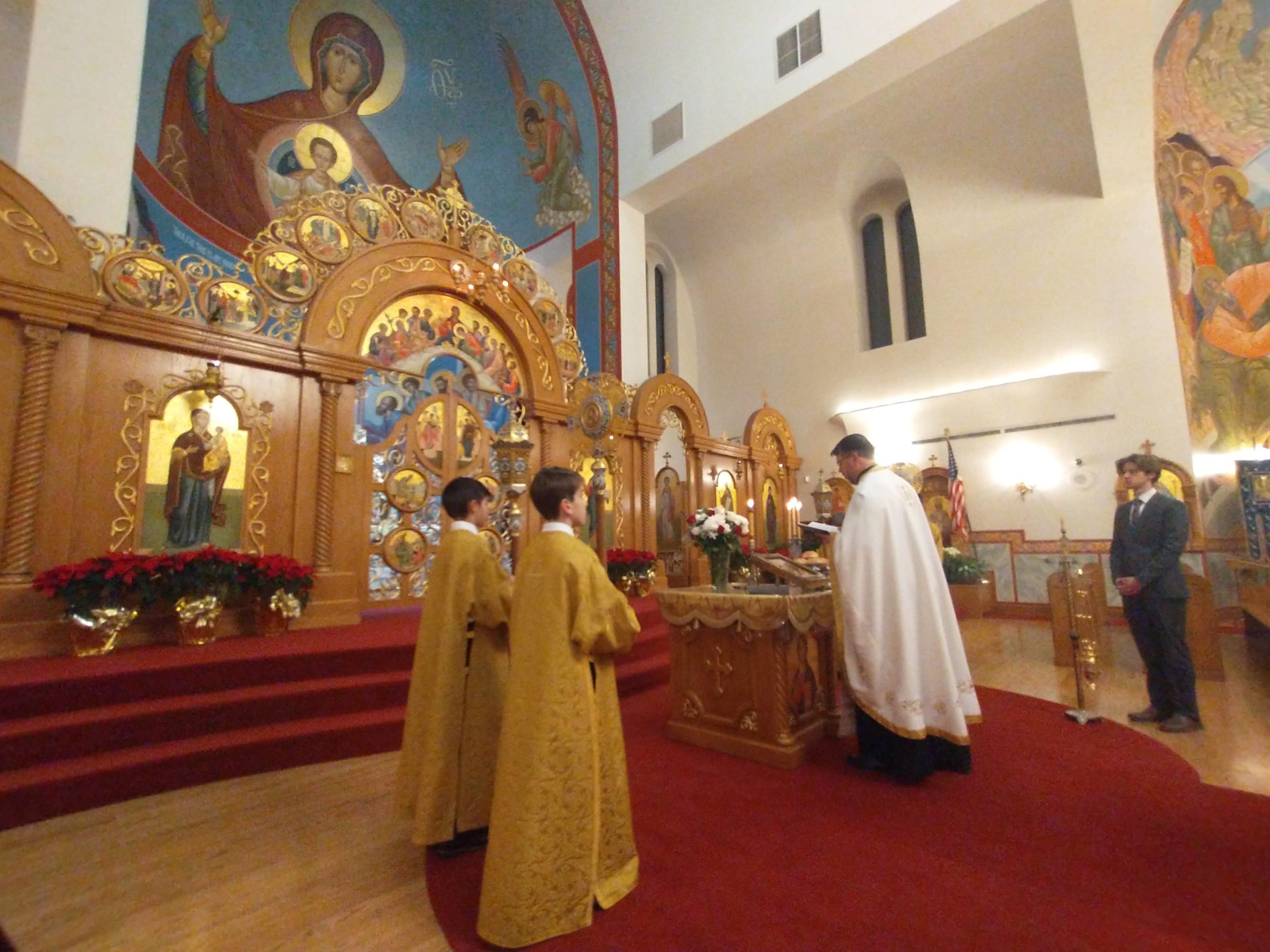
View the video from Christmas Eve services at St. Sava Serbian Orthodox Church in Merrillville, Indiana.
Click the link below to watch now:
https://business.facebook.com/saintsavachurch/videos/4719974491427616/

View the video from Christmas Eve services at St. Sava Serbian Orthodox Church in Merrillville, Indiana.
Click the link below to watch now:
https://business.facebook.com/saintsavachurch/videos/4719974491427616/
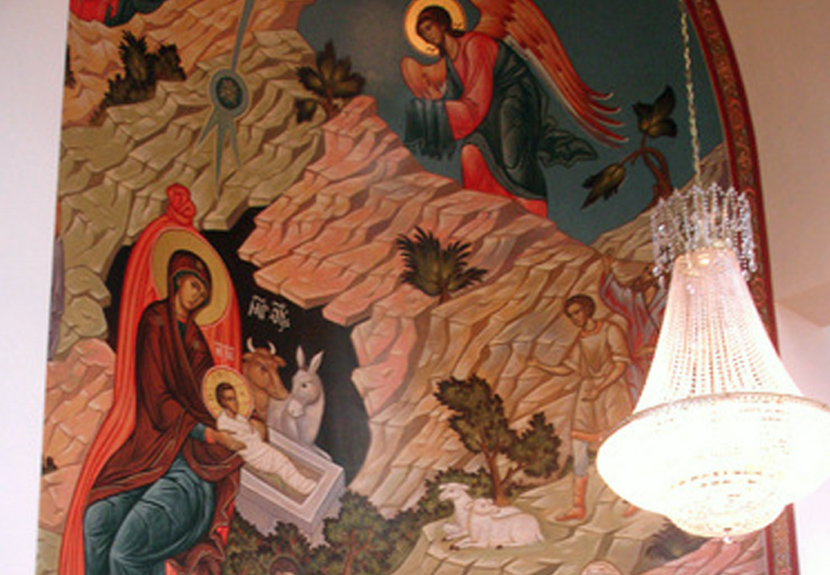
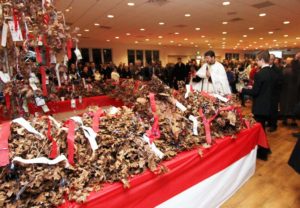
Father Marko Matic blessing the Badnjak inside the Pavilion at St. Sava Church, Merrillville, Indiana.
Join us for the celebration of Orthodox Christmas beginning with Divine Liturgy taking place at 9:00 a.m. and Great Vespers taking place at 6:00 p.m. Thursday, January 6 at St. Sava Serbian Orthodox Church at 9191 Mississippi Street, Merrillville, Indiana.
The Blessing and burning of the Badnjak will take place immediately following the Great Vespers.
Divine Liturgy will take place Christmas morning beginning at 10:00 a.m. Friday, January 7.
The complete listing of services taking place during this special time of the year is listed below.
Have you ever brought a Badnjak into your home? Do you know that the Badnjak is the finest and foremost custom of all the many traditions by which our people enhance the Christmas celebration?
Click here to read an article explaining the Spiritual Meaning of the Badnjak.
THURSDAY, January 6th
FRIDAY, January 7th
SATURDAY, January 8th
SUNDAY, January 9th
FRIDAY, January 14th
SUNDAY, January 16th
WEDNESDAY, January 19th
THURSDAY, January 20th
SUNDAY, January 23rd
THURSDAY, January 27th
SUNDAY, January 30th
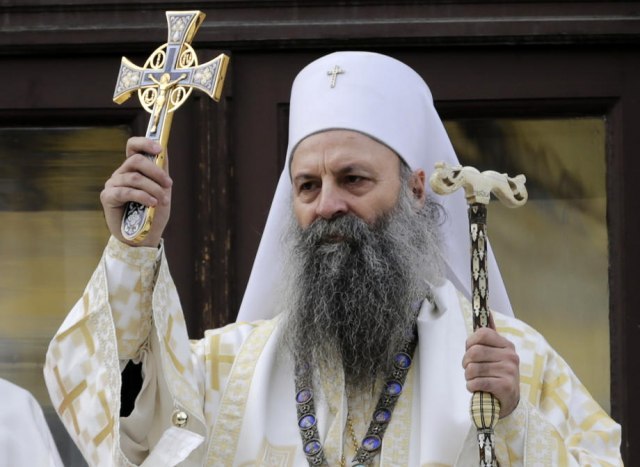
His Holiness Patriarch PORFIRIJE will be making a special visit to celebrate Holy Liturgy at St. Sava Serbian Orthodox Church in Merrillville, Indiana on Sunday, October 17, 2021 at 10:00 a.m.
This special date will also mark the celebration of the 107th anniversary and the 30 year anniversary since the consecration of St. Sava Serbian Orthodox Church.
This will be the first visit to the United States for His Holiness PORFIRIJE and the public is invited to partake in this historic event, including the Divine Liturgy and banquet immediately following.
To ensure seating for this historic event reservations will be required.
Please respond by September 30, 2021 by calling 219-736-9191.
His Holiness the Archbishop of Pec, Metropolitan of Belgrade-Karlovci, and Serbian Patriarch +PORFIRIJE, is the 46th in line on the Blessed Throne of Serbian Patriarchs, and 55th successor of St. Sava as head of the Holy Serbian Church.
On February 18, 2021, he was elected by the Holy Assembly of Bishops of the Serbian Orthodox Church to succeed His Holiness Patriarch +IRINEJ of the Blessed Memory.
His Holiness Patriarch PORFIRIJE will be the keynote speaker during the program taking place October 17, 2021.
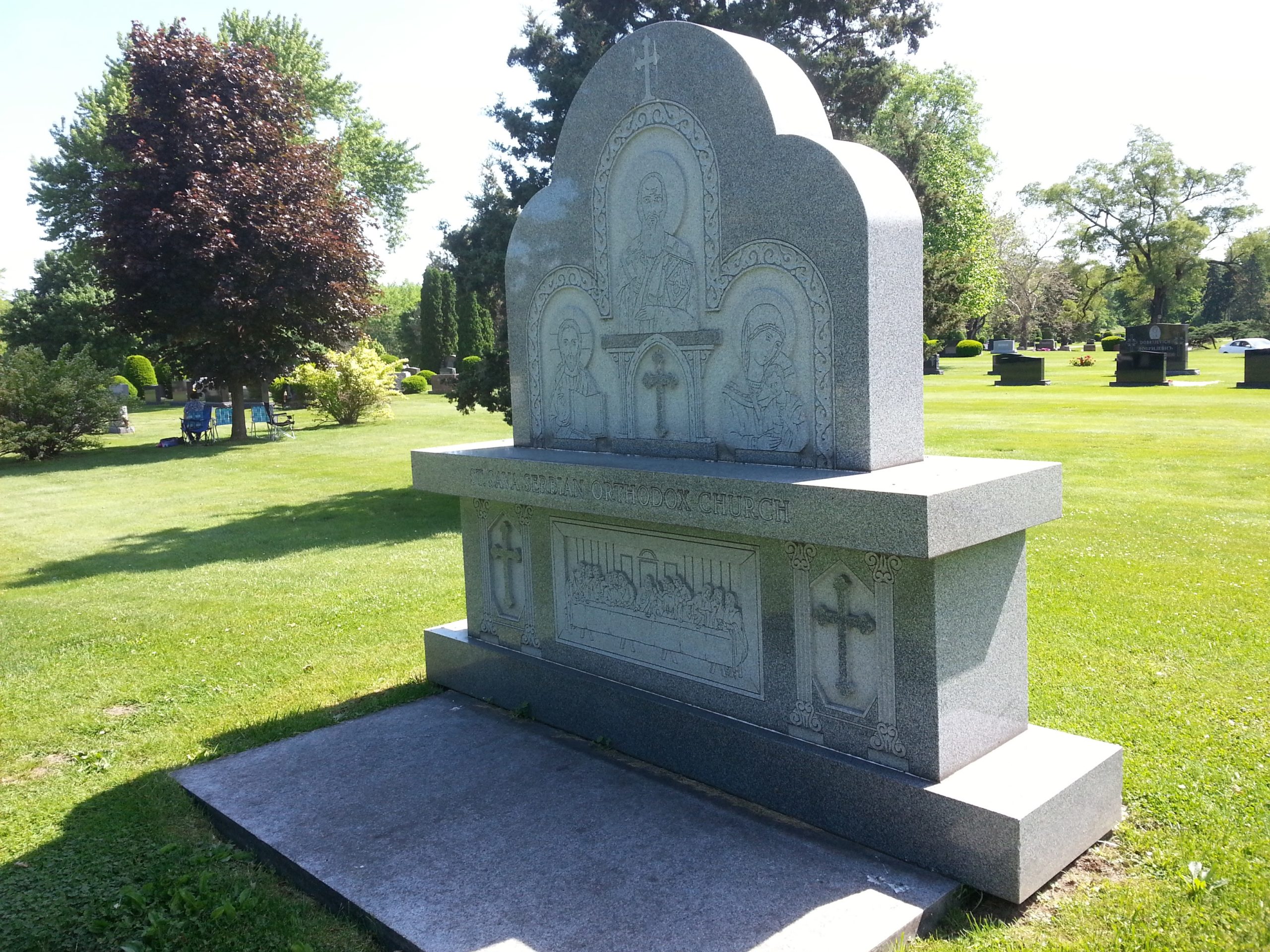
With the weekend of Memorial Day approaching, let us remember all of the departed from this life, their names and their deeds, and let us rededicate ourselves to work for peace and good will and love among all people.
Beginning Saturday, May 29 Father Marko Matic will be blessing graves at Graceland and Angelcrest cemeteries in Valparaiso. Sunday, May 30 Father Marko will be blessing graves at our Holy Cross Cemetery at St. Sava Church. Monday, May 31 Father Marko will be blessing graves at Calumet Park Cemetery in Merrillville and Oak Hill Cemetery in Gary. The complete list of times is available below.
In these days when so much is said about the high cost of living, it is fitting to pause on Memorial Day and acknowledge the great price that thousands of others have paid that we might live in this land of freedom, the United States of America.
Memorial Day came as a result of Civil War. This was America’s greatest war – in the lives that were lost, in the issues and principles at stake, in the fact that it was fought on American soil, and in the results that have come from it. American Land flowed red with blood in this terrible conflict. It was fitting that a solemn day of memory be set aside for such a conflict as that.
Just as the Jewish people have their feast of Passover to remind them of their freedom from Egyptian bondage, so America has its Memorial Day to remind us of the Salvation and rebirth of the United States as a free nation.
Since that time, Memorial Day has become a national holiday to honor the dead of all wars. Even more, it has become a day in which fitting remembrance is made of all of our relatives, kumovi and friends who rest in peace.
On this Memorial Day Weekend, let us remember all of the departed from this life, their names and their deeds, and let us rededicate ourselves to work for peace and good will and love among all people.
Services offered by Saint Sava Church
Saturday:
Sunday:
Monday:
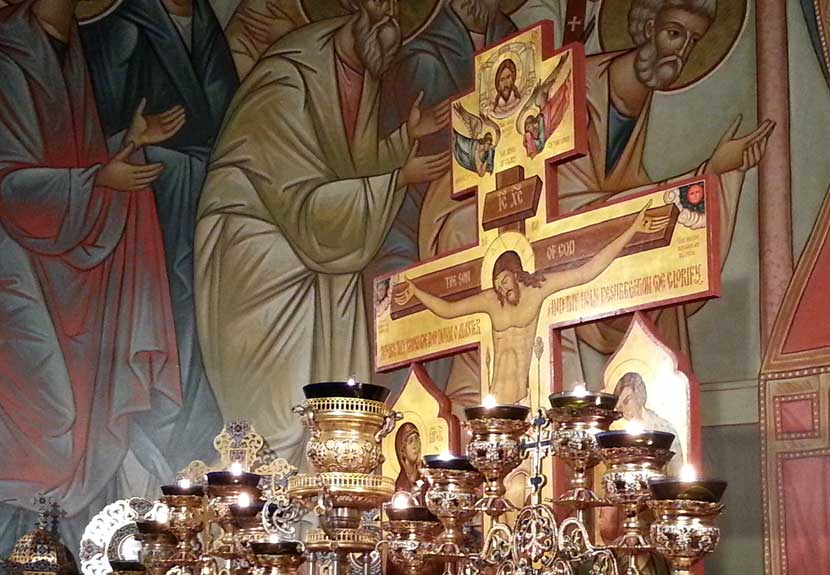
Everyone is welcome to join with us at St. Sava in Merrillville, Indiana as we commemorate one of the most important times of the year in the Orthodox Church. A complete listing of the Holy Week Schedule of Services is listed below.
LAZARUS SATURDAY – APRIL 24th 2021
PALM SUNDAY – APRIL 25th 2021
HOLY WEDNESDAY – APRIL 28th 2021
HOLY THURSDAY – APRIL 29th 2021
HOLY FRIDAY – APRIL 30th 2021
HOLY SATURDAY – MAY 1st 2021
PASCHA – MAY 2nd 2021
EASTER MONDAY – MAY 3rd 2021
EASTER TUESDAY – MAY 4th 2021
SAINT GEORGE – MAY 6th 2021
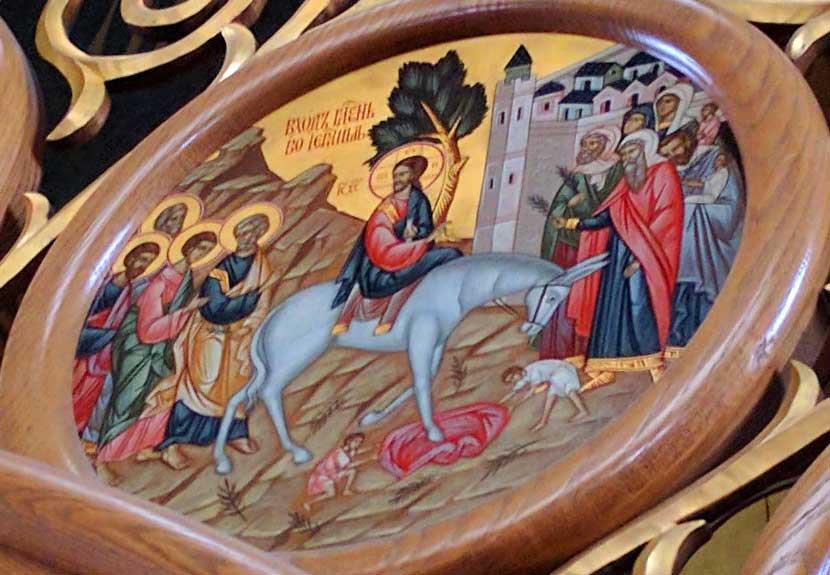
Join us for a special day for children as we commemorate Lazarus Saturday (Vrbica Day) with Divine Liturgy and Holy Communion for children beginning at 10:00 a.m. and Confession beginning as early as 9:00 a.m. Saturday, April 24 at St. Sava Church in Merrillville.
Palm Sunday Services begin Sunday, April 25 at 10:00 a.m. with Confession beginning as early as 9:00 a.m.
This weekend marks the beginning of Holy Week with special services taking place daily. A complete list of services is available in the schedule below.
Lazarus Saturday is the first day of the Great and Holy Week. On this day we commemorate Jesus raising his friend, Lazarus, from the dead. Lazarus Saturday is a paschal celebration, and is a preview of the Resurrection that we will celebrate one week later. At the Liturgy for this day, Christ is glorified as the Resurrection and the Life, and the baptismal verse “All you who have been baptized into Christ, have put on Christ” replaces the Thrice Holy Hymn. By raising Lazarus, Christ has confirmed that we all will one day be resurrected.
To gather pussywillows we walk in a festive procession on Lazarus Saturday. Coming back is particularly solemn. The clergy in their festive Garb are followed by festively dressed school children. They sing while they walk to the accompaniment of church bells. From the voices of innocent children who carry their willow twigs as a symbol of Christ’s victory reverberates, “HOSANNA…!” it is customary that each child is given a small bell which is rung during the procession thus proclaiming the Solemn Entry of our Lord into Jerusalem.
The picture remains indelible in the minds of children and continues into their later years. This is where the beauty of Orthodoxy is presented to them; this is where true dogmatic beliefs penetrate their souls to grasp resurrection from death. The beautiful holiday Troparion convinces them as well as nature which rested all winter and emerges to show itself stronger and more luxuriant.
Palm Sunday is the holiday which commemorates the solemn entry of our Lord and Saviour Jesus Christ into Jerusalem six days before the Passover (Matt. 12:1-12).
As Jesus neared the Mount of Olives, He sat on an ass and entered into the Holy City. Throngs of inspired people greeted Him as their King, singing and strewing their garments and green branches in His path as He rode. The crowds followed Him, carrying Palms in their hands and crying, “Hosanna to the Son of David! Blessed is He that comes in the name of the Lord! Hosanna in the highest!”
In remembrance of that event the first Christians established the holiday, Palm Sunday. With the celebration of Palm Sunday the custom to bless palm branches was established to celebrate Christ’s victory.
Even prior to the Christian era Palms were awarded as a sign of victory. Palms, always green, are said by old beliefs, grown out of their ashes. It signifies the glory of a victor who deserves an immortal name.
Heroes were greeted and decorated with palms. Therefore, the people greeted the Savior with palms because nothing could have dissuaded His voluntary sufferings: no Gethsemane horrors, no injustice of Judean courts, no insidious leaders, not even His mother’s love nor Golgotha’s horrible sufferings.
In pictures, palms in the hands of angels or saints represent their victory over the earth and remind us of a beautiful place in Revelations, “Then I saw many people of all languages, generations and races standing before the throne and lamb, dressed in white garb, and palms in their hands.”
The word “palma” according to the Greek fine interpretation was a phoenix with which Christ was met, or in a wider interpretation may mean a bud or a shoot.
In regions where there are no palms, a willow is blessed because it is the first one to become green after winter. It reminds us of a general resurrection. Our presence at the church service with green willows in our hand witnesses our belief in Christ victory over death.
LAZARUS SATURDAY – APRIL 24th 2021
PALM SUNDAY – APRIL 25th 2021
HOLY WEDNESDAY – APRIL 28th 2021
HOLY THURSDAY – APRIL 29th 2021
HOLY FRIDAY – APRIL 30th 2021
HOLY SATURDAY – MAY 1st 2021
PASCHA – MAY 2nd 2021
EASTER MONDAY – MAY 3rd 2021
EASTER TUESDAY – MAY 4th 2021
SAINT GEORGE – MAY 6th 2021
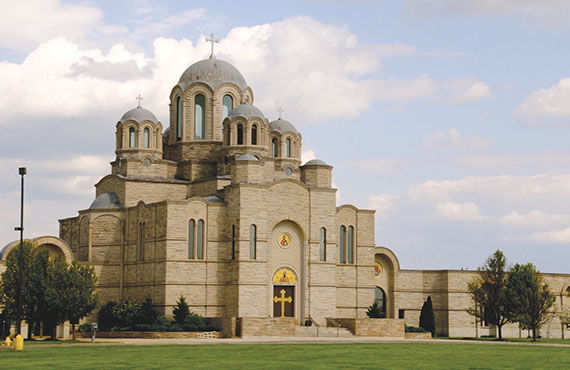
His Grace Bishop Longin will be serving at St. Sava Serbian Orthodox Church – Merrillville, Indiana for Holy Annunciation beginning at 9:00 a.m. on Wednesday, April 7, 2021.
The special visit by His Grace Bishop Longin is among the many he makes to parishes throughout the Diocese throughout the year.
There are two main components to the Annunciation: the message itself, and the response of the Virgin. The message fulfills God’s promise to send a Redeemer (Genesis 3:15): “I will put enmity between you and the woman, between your seed and her seed; he shall crush your head, and you shall lie in wait for his heel.” The Fathers of the Church understand “her seed” to refer to Christ. The prophets hinted at His coming, which they saw dimly, but the Archangel Gabriel now proclaims that the promise is about to be fulfilled.
We see this echoed in the Liturgy of Saint Basil, as well: “When man disobeyed Thee, the only true God who had created him, and was deceived by the guile of the serpent, becoming subject to death by his own transgressions, Thou, O God, in Thy righteous judgment, didst send him forth from Paradise into this world, returning him to the earth from which he was taken, yet providing for him the salvation of regeneration in Thy Christ Himself.”
The Archangel Gabriel was sent by God to Nazareth in Galilee. There he spoke to the undefiled Virgin who was betrothed to Saint Joseph: “Hail, thou who art highly favoured, the Lord is with thee: blessed art thou among women. And, behold, thou shalt conceive in thy womb, and bring forth a son, and shalt call his name Jesus. He shall be great, and shall be called the Son of the Most High: and the Lord God shall give unto him the throne of his father David: And he shall reign over the house of Jacob for ever; and of his kingdom there shall be no end.”
In contrast to Eve, who was readily deceived by the serpent, the Virgin did not immediately accept the Angel’s message. In her humility, she did not think she was deserving of such words, but was actually troubled by them. The fact that she asked for an explanation reveals her sobriety and prudence. She did not disbelieve the words of the angel, but could not understand how they would be fulfilled, for they spoke of something which was beyond nature.
Then said Mary unto the angel, “How shall this be, seeing I know not a man?” “And the angel answered and said unto her, ‘The Holy Ghost shall come upon thee, and the power of the Most High shall overshadow thee: therefore also that which shall be born of thee shall be called the Son of God. And, behold, thy cousin Elisabeth hath also conceived a son in her old age: and this is the sixth month with her, who was called barren. For with God nothing shall be impossible.’ And Mary said, ‘Behold the handmaid of the Lord; be it unto me according to thy word.’ And the angel departed from her.” (Luke 1: 35-38) The Annunciation falls during Lent, but it is always celebrated with great joy.
The Liturgy of Saint Basil or Saint John Chrysostom is served, even on the weekdays of Lent. It is one of the two days of Great Lent on which the fast is relaxed and fish is permitted (Palm Sunday is the other).
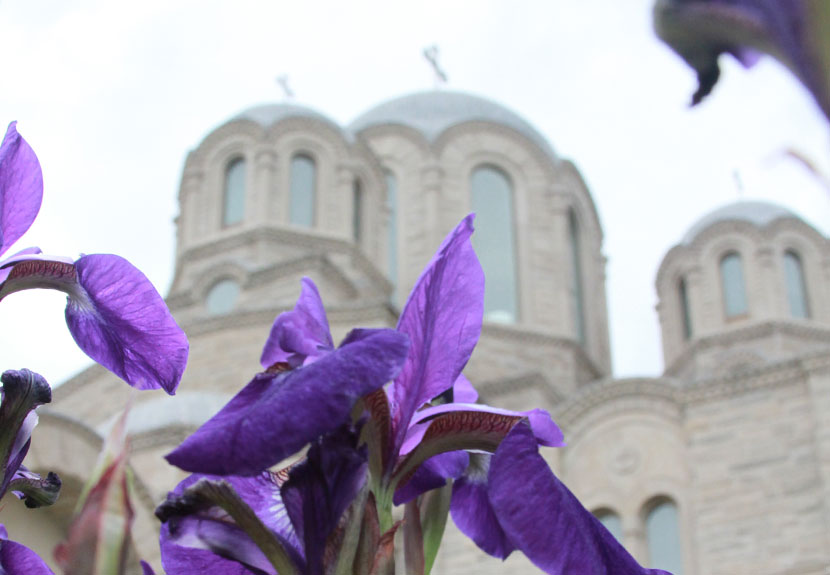
During Lent there are services taking place every day at St. Sava Church in Merrillville, Indiana. A complete schedule with daily times is listed below.
During the past year there has been much disruption in daily life schedules and routines. We encourage members, parishioners, and community members to continue following health guidelines.
Please join us during this season of reflection and preparation before the celebrations of Easter at the daily services offered below:

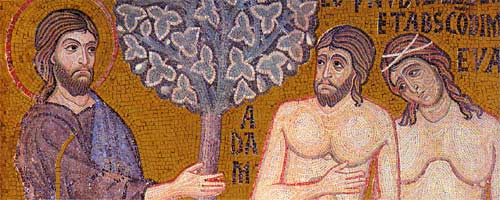
Join us for the Sunday of Forgiveness, the first service of Great Lent taking place at 6:00 p.m. Sunday, March 14 at St. Sava Church in Merrillville, IN. Divine Liturgy also takes place earlier on Sunday morning at the regular 10:00 a.m. start time.
The Sunday of Forgiveness is the last Sunday prior to the commencement of Great Lent. On the Sunday of Forgiveness focus is placed on the exile of Adam and Eve from the Garden of Eden, an event that shows us how far we have fallen in sin and separated ourselves from God. At the onset of Great Lent and a period of intense fasting, this Sunday reminds us of our need for God’s forgiveness and guides our hearts, minds, and spiritual efforts on returning to Him in repentance.
The Sunday of Forgiveness, the last of the preparatory Sundays before Great Lent, has two themes: it commemorates Adam’s expulsion from Paradise, and it accentuates our need for forgiveness. There are obvious reasons why these two things should be brought to our attention as we stand on the threshold of Great Lent. One of the primary images in the Triodion is that of the return to Paradise.
Lent is a time when we weep with Adam and Eve before the closed gate of Eden, repenting with them for the sins that have deprived us of our free communion with God. But Lent is also a time when we are preparing to celebrate the saving event of Christ’s death and rising, which has reopened Paradise to us once more (Luke 23:43). So sorrow for our exile in sin is tempered by hope of our re-entry into Paradise.
The second theme, that of forgiveness, is emphasized in the Gospel reading for this Sunday (Matthew 6:14-21) and in the special ceremony of mutual forgiveness at the end of the Vespers on Sunday evening. Before we enter the Lenten fast, we are reminded that there can be no true fast, no genuine repentance, no reconciliation with God, unless we are at the same time reconciled with one another. A fast without mutual love is the fast of demons. We do not travel the road of Lent as isolated individuals but as members of a family. Our asceticism and fasting should not separate us from others, but should link us to them with ever-stronger bonds.
The Sunday of Forgiveness also directs us to see that Great Lent is a journey of liberation from our enslavement to sin. The Gospel lesson sets the conditions for this liberation. The first one is fasting—the refusal to accept the desires and urges of our fallen nature as normal, the effort to free ourselves from the dictatorship of the flesh and matter over the spirit. To be effective, however, our fast must not be hypocritical, a “showing off.” We must “appear not unto men to fast but to our Father who is in secret” (vv. 16-18).
The second condition is forgiveness—“If you forgive men their trespasses, your Heavenly Father will also forgive you” (vv. 14-15). The triumph of sin, the main sign of its rule over the world, is division, opposition, separation, hatred.
Therefore, the first break through this fortress of sin is forgiveness—the return to unity, solidarity, love. To forgive is to put between me and my “enemy” the radiant forgiveness of God Himself. To forgive is to reject the hopeless “dead-ends” of human relations and to refer them to Christ. Forgiveness is truly a “breakthrough” of the Kingdom into this sinful and fallen world.
The icon of the Sunday of the Last Judgment incorporates all of the elements of the parable from Matthew 25:31-46. Christ sits on the throne and before him the Last Judgment takes place. He is extending his hands in blessing upon the Theotokos on his right, and John the Baptist on his left. Seated on smaller thrones are the Apostles, represented by Peter and Paul, a depiction of the words of Christ in Matthew 19:28. (1.)
Prior to their descent into sin through disobedience, Adam and Eve were blessed with a beautiful relationship of communion and fellowship with God. However, they were tempted by the devil appearing in the form of a serpent to disobey God and eat from the tree of the knowledge of good and evil (Genesis 2:15-17).
When they took of the fruit and sinned, they realized that they were naked. Further, when “they heard the sound of the Lord God walking in the garden”…they hid themselves “from the presence of the Lord” (3:8). The icon shows Adam and Eve attempting to cover themselves with fig leaves as they try to hide, and yet they stand ashamed before the Lord.
Because of their disobedience the Lord expelled them from the garden. The icon shows the Archangel of the Lord directing them out of Paradise, through the gate of Eden where God placed “the cherubim and a sword flaming and guarding the way to the tree of life” (3:23-24). Adam and Eve are dressed in the garments of skins made for them by God (3:20).
The Sunday of Forgiveness is also known as Cheesefare Sunday. This is the last day that dairy products can be eaten before the Lenten fast. The full fast begins the following day on Clean Monday, the first day of Great Lent. On the evening of the Sunday of Forgiveness the Church conducts the first service of Great Lent, the Vespers of Forgiveness, a service that directs us further on the path of repentance and helps us to acknowledge our need for forgiveness from God and to seek forgiveness from our brothers and sisters in Christ. This is the first time that the Lenten prayer of St. Ephraim accompanied by prostrations is read. At the end of the service all the faithful approach the priest and one another asking for mutual forgiveness.
Orthodox Christians are encouraged to enter Great Lent in repentance and confession by attending these services, coming for the Sacrament of Confession, and dedicating themselves to worship, prayer, and fasting throughout the Lenten period. The first day of Lent, Clean Monday, signifies the beginning of a period of cleansing and purification of sins through repentance.